Counted By Kilograms and Tons
The marine animals industry is by far the largest exploitation industry in the world. Thousands of billions of individuals are caught in the world’s oceans, seas and lakes. Hundreds of billions of them are caught to feed the hundreds of billions of farmed fishes and crustaceans. Additional billions of individuals are caught unintentionally as bycatch. And who knows how many are used as bait to catch other fishes.
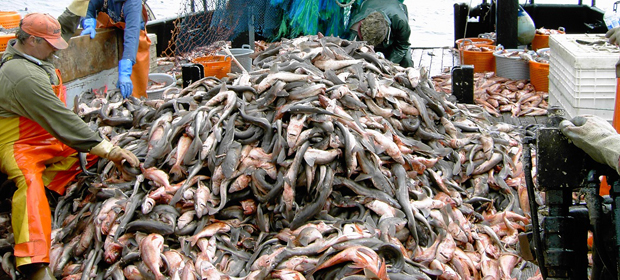
Pole and Line Fishing (Trolling)
Surprisingly, hooking and pulling individual after individual out of the water using poles and rods is still a common fishing practice for commercial use, usually for tuna and salmon.
Dozens of fishermen armed with a pole and line, gather on the rear deck while 2 others are throwing live fishes, usually anchovies, small scads, atherinidae and sardine, into the water to create a "feeding frenzy".
When the hungry fishes bite the hook, the fishermen yank their poles up and throw the fish over their shoulders onto the deck.
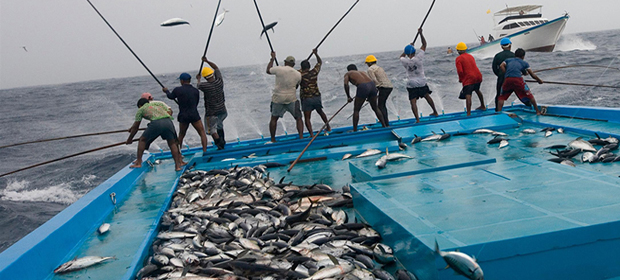
Everyday thousands of fishes are captured using this traditional fishing method which gains popularity in recent years. This violent practice is being promoted as the ethical way of consuming tuna fish bodies by many environmental organizations since in a one by one fishing method it is less likely to catch non-desirable species together with the desirable ones. They care about the by-catch and couldn’t care less about the catch.
Long Line Fishing
Long line fishing, or long lining, is a commercial fishing method that uses hundreds or even thousands of baited hooks hanging from a single line, which may be 50-100km long. Unlike the other hook and line fishing methods which catch fishes quickly, fishes caught on long lines are trapped for hours or even days until the line is hauled up, sailing away with the boat while they hang on the hook from the mouth.
It is common to use live fishes impaled on hooks as bait. A semi-automatic machine impales the live fishes on hooks as the line is played out.
The target fishes, once hooked, may themselves be subsequently attacked by predators mostly birds. So in many cases each hook has 3 victims for each time it is thrown into the ocean.
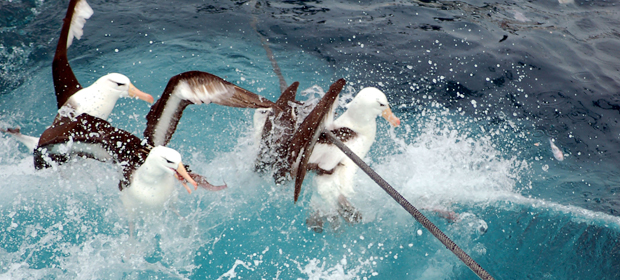
Live Baits
Baits usually include live maggots or any part of dead animals. For larger predatory fishes, fishermen use live bait such as shrimps, minnows and other small fishes. Live baits are used because they bleed and therefore attract more fishes.
The fishes are pierced with one or two hooks through the eye sockets, tail, lips or back, and are then thrown into the water where they can only struggle in agony on the hook, until they are being eaten by another fish or die from their injuries.
Since fishermen don't want to waste time catching the bait before they start fishing, fishes are commonly caught beforehand and kept in small tanks.
Fishes have particularly sensitive mouths, which are important not only for feeding, but also for building nests and for hiding their offspring from dangers. Fishing hooks tear apart their fragile mouths.
Hooks are regularly swallowed by fishes and their removal often damages internal organs and leads to death. It can also be caught in their gills or eyes.
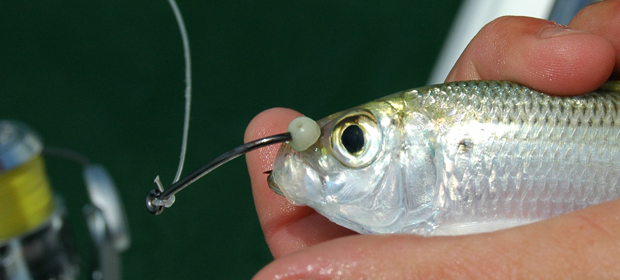
Besides being severely hurt from the hook itself, when hauled up from the deep, the sudden changes in pressure, temperature, vibration, oxygen concentration, light intensity and the damage to the protective mucous layer, are all causing fishes extreme suffering just from being exposed to an environment they are not designed to cope with. When out of the water, the fishes slowly suffocate like we would underwater. In their death throes, fishes writhe, gasp and flap their gills as they desperately try to get oxygen. Anyone who has ever been unable to breathe, even for a short time, knows how terrifying this experience is.
Commercial Fishing
The modern commercial fishing boats devouring marine animals are vast floating factory units, equipped with radar and satellite technology to track their helpless prey.
There is no place to hide. No chance to escape.
The most common modern commercial fishing techniques are:
Trawling
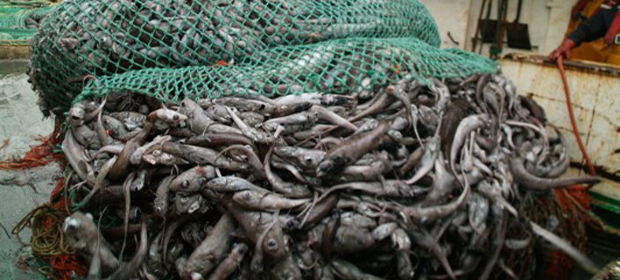
Trawling is one of the most common methods of commercial fishing. A trawl is a big, heavy, "open-mouthed net" that is pulled along the seabed by heavy boats. Hundreds of beings are killed as it grinds over the sandy bottom of the ocean.
Trawling, literally clears-out the ocean floor, grinding up coral reefs and other habitats.
Being pulled out from the water, the fishes undergo excruciating decompression. Frequently, the intense internal pressure ruptures the swimbladder, pops out the eyes and pushes the oesophagus and stomach out through the mouth.
Many suffocate or are crushed to death under the weight of all the other fishes and other beings including starfish, crabs, shellfish and more. The unwanted catch is thrown back to the sea where they will suffer and die from their injuries.
Drift Netting
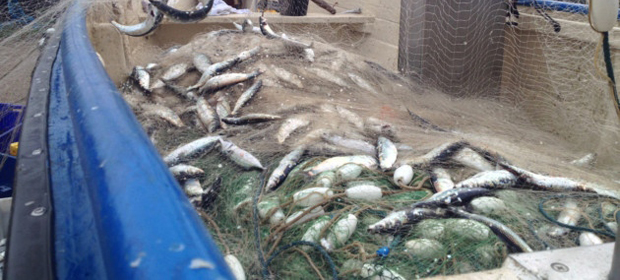
Drift netting involves the use of a very strong but very fine net made of nylon, which is almost invisible in the water. It forms a wall beneath the water surface and catches all the fishes that swim into it. Folds of loose netting snag on the fishes’ tail and fins and wrap the fishes up as they struggle to escape.
Drift nets can stretch for more than 30 kilometers and cause a great deal of destruction. It sometimes breaks free during storms and drifts around catching sea animals. The weight of the dead bodies drags it to the bottom of the ocean where it lies until the bodies rot. It then floats back to the surface and continues to capture more animals.
Purse Seine Nets
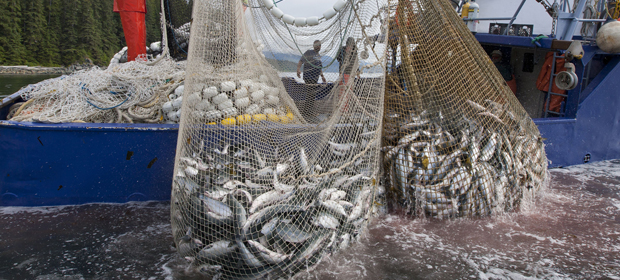
In purse seining, a school of fishes is gradually surrounded by a long wall of netting, hanging in the water and towed into a circle. Once the loop is complete, the bottom of the net is drawn together like a string bag, closing the net underneath, trapping the fishes inside. Then they are all hauled into smaller brail nets and lifted aboard.
A large purse seine can be one Kilometer long and 200 meters deep.
This fishing operation can take hours in which the fishes struggle to get out of the encircling net.
The fishes become increasingly crowded as the net is tightened ready to be hauled. Many fishes get injured and die as a result of skin and scale damage from collisions with other fishes and with the net walls.
Finning
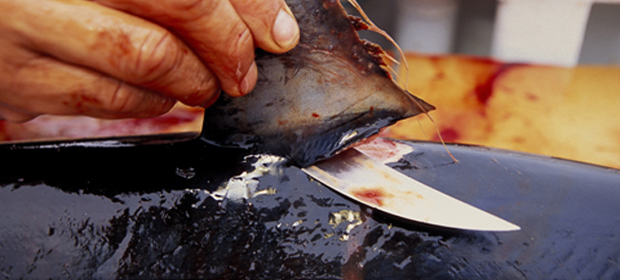
Finning is the practice of slicing off sharks’ fins while they are still alive and throwing the rest of their body back into the ocean (fishermen are only interested in the fins because shark meat is of low economic value and takes up too much space). Some sharks starve to death, others are slowly eaten by other fishes, and some drown since sharks need to keep moving to force water through their gills for oxygen so if they cannot move they suffocate.
Shark fins are used to make shark fin soup, an Asian "delicacy". Tens of millions of sharks are finned every year as the demand for shark fin soup rocketed in recent years due to the increased prosperity of China and other countries in East Asia.
Fish Farming
Fish Farming, also called Aquaculture, is the farming of aquatic beings for human consumption. As fish populations steadily decline, farming of fishes has been promoted by the industry as the answer to the decrease in fishes capture. In 1970 about 5% of the fishes humans consumed came from farms. In 2015 for the first time most of the consumption of fishes was of farm confinement and not captured in the ocean.
While it may seem like a modern invention, "aquaculture" has been around for ages. Humans have been farming fishes in net enclosures, ponds, vats and even woven baskets for thousands of years. However in the last few decades, as the worldwide demand constantly rise while wild population is decreasing, the industry became extremely intensified, aiming at producing more fish, bigger, faster and cheaper, to meet humans’ insatiable demand.
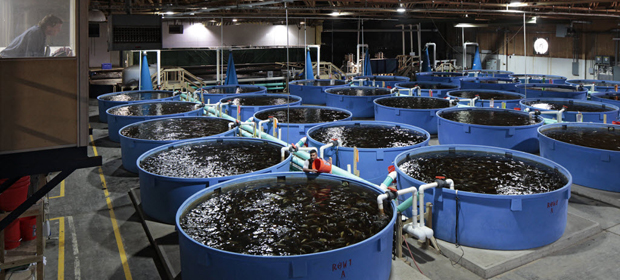
There are several different types of fish farms, some more intensive than others and all are exploitative and harmful in various ways. They mainly differ in relation to the confinement type, its location, the feed type and the water management. The main ones are:
Cage Systems
Billions of fishes are imprisoned in cages that are placed in lakes, ponds and oceans (in the ocean it is referred to as off-shore cultivation). In this system the fishes are artificially fed and are killed when they reach market size.
Pond Systems
Ponds or ditches are created on land specifically to grow fishes. Many of which are small and crowded, with low levels of oxygen and artificial feeding.
On-Land Fish Farms
The most intensive system of fish exploitation. The fishes are extremely densely imprisoned in these closed systems, which are cage tanks that can be located almost anywhere, completely separated from the ocean.
At-Sea Fish Farms
The "cutting-edge" development in fish exploitation is a floating fish farm which is basically a cage that is set in deep ocean, mainly so the waste would spread by ocean currents and wouldn’t pile in one place like in the cage systems. The fishes are artificially fed by divers
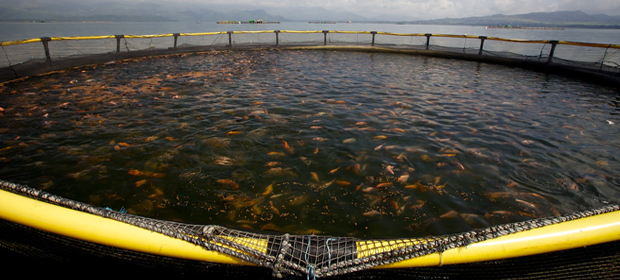
Just like in any other type of factory farming, fishes are crammed together at high density in tanks, cages or earth ponds, and just like chickens and pigs they suffer from high stress, diseases, low level of oxygen, high levels of ammonia, inappropriate temperature, inappropriate salinity, muscles growing too fast for their bodies, rough handling, terrible transportations and horrifying killing methods.
Diseases are one of the greatest problems in fish farms. Overcrowding leads to infections of the pancreas, ulceration of the flesh, kidney disease and sea lice infestation, which multiply and graze on the fishes’ flesh, literally, eating them alive from the outside. The eyes of fishes are particularly sensitive to stress. Severe cataract is common in farmed fishes, often so bad that it causes eyes to bleed and fishes to go blind.
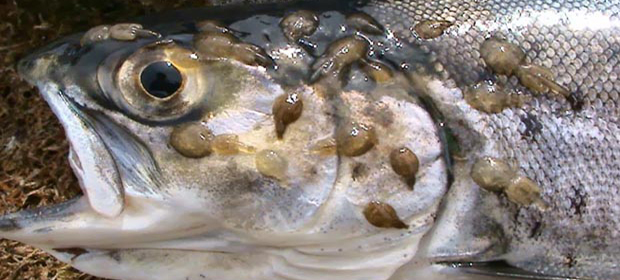
Fishes in farms can’t avoid fear and distress causes such as low levels of oxygen, noise, rough weather and larger fishes’ aggression, since they have no cover places to hide in.
They also suffer from several handling procedures, for example when they are injected with vaccination or when they are being transferred between pens, during a process called grading in which the fishes are sorted and separated by their size.
Confining fishes in cages prevents their natural swimming behavior. Fishes like salmon who migrate over hundreds of miles from the rivers where they are spawned to the open sea, swim in circles around the cage, rubbing against the mesh and each other and are constantly agitated.
Salmons as big as three-quarters of a meter long, are commonly imprisoned in a space smaller than a bathtub.
Genetic Manipulations
As other farmed animals, fishes are not only abused by the outer rearing conditions but also by their own bodies, due to various genetic invasions.
Farmed fishes have been selectively bred to enhance the industry’s desired traits such as more rapid growth, larger size, greater resistance and "improved feed conversion rates". Almost 100% of the farmed Atlantic salmon grows twice as fast as wild salmon. Fast growth rates are associated with an increased incidence of cataracts and abnormal heart shape and function.
Also, since sexual maturity reduces the "flesh quality", fishes undergo another manipulation named Triploidy which makes them sterile. It’s a method of creating fishes with three sets of chromosome instead of the usual two by subjecting newly-fertilised eggs to heat or pressure shock. These fishes are susceptible to a range of health problems, including poorer growth, higher levels of spinal deformities and cataracts.
Stripping
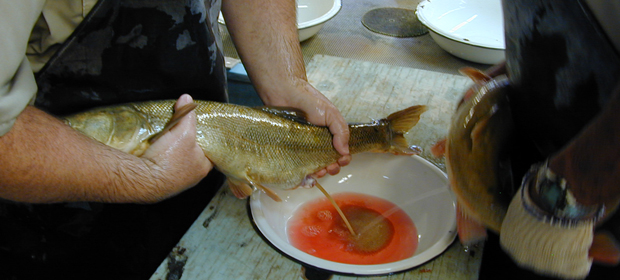
'Stripping' accurately describes a brutal process in which eggs are taken from female fishes and sperm is taken from males. The female's front of the abdominal cavity is aggressively squeezed backwards by hand to force all the eggs out. Another method is compressing air through a needle, into the abdominal cavity. Occasionally the fish is being cut alive to remove the ovaries.
Most females die after the ‘stripping’.
Sperm or 'milt' is taken from male fishes in a similar way. A syringe or pipette may be used to take sperm directly. It is taken at three-day periods and the males are normally killed at the end of this horrific procedure.
Fishmeal and Fish Oil
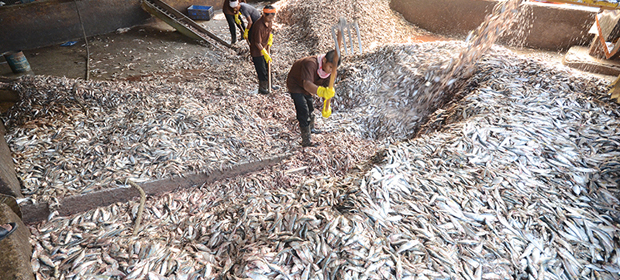
It is estimated that every year between 450 billion – 1 trillion fishes are consumed by humans indirectly. These are fishes that are purposely caught specifically to be ground up into fishmeal and fish oil, which are mostly used as food for other animals humans raise for food, mainly aquatic ones.
Virtually any fish or shellfish in the sea can be ground up into fishmeal and fish oil, but they are usually produced from small marine fishes that are considered not suitable for direct human consumption.
Murder Methods
Farmed fishes are murdered by a range of different methods from a strike to the head, gassing with carbon dioxide, cutting their gills without stunning them first or simply leaving them to suffocate.
Before the killing, the fishes are often being starved for up to 3 weeks to remove undesirable oil deposits (since farmed fishes are fed with very rich in oil food) and to make it less messy to take out the insides of the fish.
Trout are often packed in ice, slowly freezing to death, up to half an hour of dying in agony.
In some markets, fish steaks are cut off of live fishes, starting at the tail while the fish continues to swim around the bowl between customers.
A Dutch study that measured the time it takes for fishes to become insensible after common killing methods, found that it takes between 25 and 65 minutes for fishes to stop feeling when they were gutted alive and between 55 and 250 minutes when they were asphyxiated without gutting. Both are very common killing methods.

The fish industry is the biggest animal derived food industry in the world.
Considering the past and present state of affairs, the only likelihood that it will ever stop isn’t that someday humans would figure out that fishes are capable of feeling pain and suffering, but that humans would devour all the commercially captured species of fish, a scenario predicted for 2048.
The saddest thing about the 2048 ocean depletion forecast, is not that the only way the torture would ever end is that the victims would, but that even that strange wish won’t come true since humans’ twisted ingenuity enabled the exploitation to take a new route and continue unabated.
Fish farming is already where most of the consumption of fishes comes from. So even humans’ incontrollable greed doesn’t stop them, they always find ways to keep exploiting.
We mustn’t lay our hopes on that someday the victims would die out, we should divert our actions so the victimizers would .